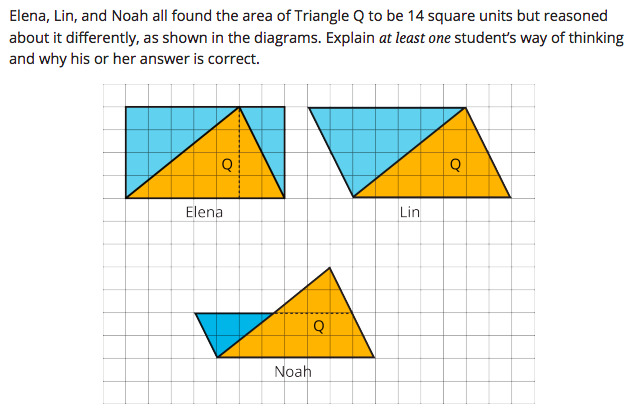In the summer of 2019, ConnectED: The National Center for College and Career joined forces with Envision Learning Partners, Callahan Consulting, UCSD CREATE and San Diego Unified School District to launch the San Diego Enhanced Mathematics initiative (SDEM). The San Diego Enhanced Mathematics initiative is a district-wide community of educators working together to enhance and modernize the mathematics courses through support and resources for enriching instruction and curriculum. The goal of the initiative is to provide opportunities for all students to:
- Apply their mathematics to personal, civic, and professional contexts
- Solve non-routine problems creatively and collaboratively
- Communicate their mathematical reasoning and explanations
- Connect mathematical ideas through projects
Supported by the Bill and Melinda Gates Foundation’s Professional Learning Partnerships program, our partnership with SDEM provides teachers, coaches, and district administrators with training, resources, and curriculum enhancements to increase use and impact of the Mathematics Language Routines embedded in the Illustrative Mathematics curriculum for multilingual students learning English. Given the critical importance of mathematics as either a bridge or gatekeeper to high school graduation, linked learning pathway success, postsecondary admissions, and career options — especially in STEM fields — we have welcomed the opportunities afforded by this project to learn, design, and pilot new ways to “do math” in pathways, as well as to improve the middle school experience in ways that increase access and success for all students.
The Professional Learning Partnership endeavoured to provide high quality curriculum-based professional learning to teachers piloting the Illustrative Mathematics curriculum, along with some district enhancements. The work consisted of professional learning, ongoing coaching, and support to build Professional Learning Communities. We worked to build collective understanding of the curriculum’s design, discussing instructional practices, and alternative grading schemes. We attended specifically to how the Mathematics Language Routines create opportunities for students to use and develop language and mathematical understanding simultaneously – with special attention to students who are learning English and students with diverse learning needs.
As was the case for most schools across the country, with the onset of the COVID-19 pandemic, the San Diego Unified School District quickly transitioned to 100% distance learning, with limited synchronous instruction and some asynchronous instruction. We worked hard to curate and disseminate a prioritized and adjusted version of our curriculum for Spring 2020 and began preparing the same for the 2020-2021 school year.
As teachers acclimated to their new reality, we turned our attention to the task of developing professional learning and support structures that could both meet the immediate needs for teachers and continue to move the vision of our initiative forward. We would like to share this example from a 6th grade classroom, where the students are using Desmos and PearDeck to explore content and answer questions while also using Zoom to interact with each other verbally. The activity we want to highlight is the Math Language Routine Critique, Correct, Clarify. This routine provides an opportunity for teachers to formatively assess the language that students are using to communicate about math, and an opportunity for students to metacognitively reflect upon the features of the communication. We believe that providing opportunities for students to respond to each other’s work is central to building opportunities for students to Critique each other’s work, Correct each other’s math, and Clarify each other’s language.
This is the problem that students were given for homework.

On the following day the teacher had selected a sampling of student responses and the class had a conversation about the math content, clarity of context and logical reasoning of these responses. The teacher has selected a range of student responses, varied from the perspective of whose writing gets represented and varied with respect to levels for proficiency and formal communication.
The teacher focused students’ attention to one specific response and asked students to provide feedback, to Clarify and/or Correct this particular response. The teacher uses elements of different student work, both written and verbal, to revise and refine one final piece of work. By the end, this statement has gone through several iterations, and many students had a hand in building this final work product. This process strengthens the belief that all students can be successful and have something valuable to contribute to the classroom community. This process also highlights the importance of reflection and revision, that things can always be improved.
This short clip demonstrates the numerous ways that students can engage with each other’s work in productive ways. We see how a teacher layers the students’ learning experience using student work as the driver for instructional design. Finally, we can observe the power of placing student work at the center of the learning – honoring student voice, elevating all voices and building a culture of reflection and revision.
)